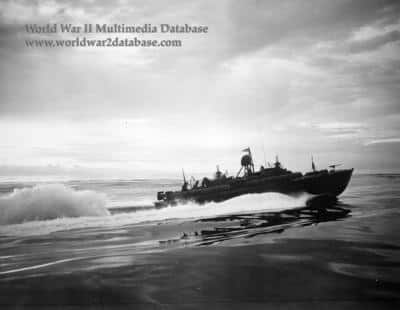A patrol boat is a small vessel that serves several purposes in the U.S. Navy. Many Navy patrol boats constructed before the 1980s contained asbestos. Patrol boats and asbestos led to veterans developing diseases such as malignant mesothelioma.
If you were diagnosed with mesothelioma, asbestos-related lung cancer, or asbestosis, you might be entitled to considerable compensation. We invite you to fill out our form today for a free Financial Compensation Packet, filled with information about experienced mesothelioma lawyers in your area, how to get paid in 90 days, how to file an asbestos trust fund claim, and much more.


FREE Financial Compensation Packet
- Info on law firms that will recover your HIGHEST COMPENSATION
- Learn how to get paid in 90 days
- File for your share of $30 billion in trust funds

About Patrol Boats in the U.S. Navy
Patrol boats are smaller naval vessels primarily used for defending coastlines or enforcing laws and borders. Both the U.S. Navy and Coast Guard use patrol boats.
In the U.S. Navy, patrol boats carried sailors and their supplies through rivers and along the coast. Patrol boats were also small enough to perform stealth military missions.
Different designs of patrol vessels served specific purposes for the Navy. During World War II, some patrol boats were built to find and destroy submarines, while others helped escort people to safety.
Different types of patrol boats used in the U.S. Navy include:
- Patrol Craft Coastal
- Hydrofoil Vessels
- Submarine Chasers
- Patrol Craft Escort
- Patrol Craft Rescue Escort
- Patrol Craft Sweeper
- Eagle-Class Patrol Craft
- Patrol Frigate
- Patrol Gunboat
- Motor Gunboat
- River Gunboat
- Patrol Torpedo Boat
- Patrol Yacht
- Coastal Patrol Yacht
- Submarine Chaser
Patrol boats were used during both World War I and World War II. These navy ships were in high demand, and to construct them quickly, the military armed motorboats and trawlers with machine guns and other weapons at a fast pace.
Two of the most well-known classes of Navy patrol vessels were the Eagles and the Cyclones. The Eagles were first built after World War I and deployed during World War II.
The Navy commissioned the Cyclone class of patrol boats beginning in the 1990s. The Navy used Cyclones for surveillance, coastal patrol, and to support or conduct special operations in shallow waters.
The last two cyclones were decommissioned in 2023. After decommissioning, the Navy transferred the USS Monsoon and USS Chinook to the Philippine Navy.
Was Asbestos Used on Navy Patrol Boats?
Although patrol boats are small compared to other vessels, they were still constructed with large amounts of asbestos-containing products. The Navy built patrol boats using asbestos through the late 1970s.
The Navy used asbestos on all of its ships for several decades. Asbestos was in demand mostly for its ability to insulate. It protected vessels and their crews from fire and heat.
Mant patrol vessels contained asbestos. Some of the last Navy patrols built with asbestos were the following:
- USS Grand Rapids
- USS Pegasus
- USS Tucumcari
Asbestos is no longer actively used on Navy vessels but still lingers in older boats.
Where Was Asbestos Used on Patrol Boats?
Asbestos-containing products were used in various areas all over patrol boats. Asbestos was found in all kinds of insulation and anything on boats that generated or contained heat. Some of the areas or components of Navy vessels that contained asbestos include:
- Gaskets
- Valves
- Seals
- Boilers
- Pipes
- Insulation
- Ropes
- Deck materials
- Firefighting and protection gear
Who Was at Risk of Exposure to Asbestos on Navy Patrol Boats?
Anyone who worked on patrol boats in the past or was even aboard or around them is at a heightened risk of developing life-threatening asbestos diseases.
Serving on Navy vessels put veterans at high risk of exopsure because they often worked in enclosed spaces with little ventilation. They were highly likely to inhale any exposed asbestos fibers.
Some of the positions on patrol boats and other Navy vessels that put veterans at the highest risk of asbestos exposure include:
- Boiler work
- Engine room work
- Insulation work
- Repair work
- Shipbuilding in shipyards
Benefits for Veterans with Mesothelioma
If you served on patrol boats and other Navy vessels with asbestos, you are at risk for mesothelioma and other asbestos illnesses. The U.S. Department of Veterans Affairs (VA) offers benefits for disabled veterans. This includes asbestos illnesses.
Monthly disability compensation provides a monthly payment for qualifying veterans with service disabilities. Mesothelioma and asbestos lung cancer both get a 100% disability rating from the VA.
Veterans who need home care or who have dependents may qualify for additional benefits. Dependents of deceased veterans can apply for monthly compensation and burial benefits.
Healthcare is another important benefit the VA offers. Mesothelioma is rare, with few physicians who specialize in treating it. Several VA medical facilities have access to mesothelioma specialists.
Can Veterans Sue the Navy for Asbestos Exposure?
You cannot sue the Navy or the government for your service-related asbestos exposure. You can get VA benefits and sue private companies that supplied the Navy with asbestos.
Many veterans who sued asbestos companies have received substantial settlements. A settlement or award from a lawsuit does not affect your VA benefits.
Another source of compensation is an asbestos trust fund claim. Bankrupt asbestos companies set up these funds to compensate future claimants.
Talk to a mesothelioma lawyer if you received an asbestos illness diagnosis after serving in the U.S. Navy. They can help you file a lawsuit, determine if you qualify for any asbestos trusts, and help you make a claim for VA benefits.
Help and Resources for Mesothelioma Victims
Don’t forget to fill out our form to get our free Financial Compensation Packet, filled with information on the top experienced asbestos and mesothelioma attorneys in your area. Keep in mind that if you have mesothelioma, asbestos-related lung cancer, or asbestosis, you may be eligible for considerable compensation. For additional assistance or questions, contact us at 800-793-4540.
References
- Rogoway, T. (2014, September 7). The Navy’s Long Overdue Smart & Deadly Patrol Boat Has Arrived. Jalopnik.
Retrieved from: http://foxtrotalpha.jalopnik.com/the-navys-long-overdue-smart-deadly-patrol-boat-has-a-1631598708 - National Archives. (2021, June 17). U.S. Navy Ships – Patrol Vessels.
Retrieved from: https://www.archives.gov/research/military/navy-ships/patrol-vessels.html - Burgess, R.R. (2021, June2). The Navy’s Shrinking Patrol Boat Force.
Retrieved from: https://seapowermagazine.org/the-navys-shrinking-patrol-boat-force/ - Lariosa, A.M. (2023, April 26). Last Cyclone Patrol Ships Leave U.S. Navy, Many Will Serve in Foreign Forces. USNI News.
Retrieved from: https://news.usni.org/2023/04/26/last-cyclone-patrol-crafts-leave-u-s-navy-many-will-serve-in-foreign-navies